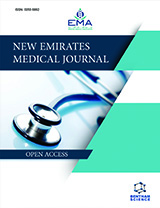Abstract
Background: Student nurses are the future healthcare providers. Safe nursing practice is crucial as they often are exposed to multiple infections, including bloodborne pathogens, during their clinical practice.
Aim: To assess the factors that influence adherence to standard precautions among nursing students and to find the association between adherence to standard precautions with their selected demographic variables.
Methods: A cross-sectional study was conducted among 103 undergraduate nursing students recruited by convenience sampling technique from a selected health sciences university. Adherence to standard precautions was assessed using a standardized questionnaire, ‘Factors Influencing Adherence to Standard Precautions Scale-Student Version’ (FIASPS-SV). Using SPSS version 23 the data were analysed with descriptive and inferential statistics. Frequency and percentage were used to describe the socio-demographic characteristics. Inferential statistics, namely the Chi-Square test, was used to find out the association between FIASPS-SV and their demographic variables. The P value less than 0.05 was taken as statistically significant.
Results: The ‘contextual cues’ was found to be the most influencing factor [Total Mean 21.98(6.148), Range 0-28; Mean Response Range of 3.18(.32), Response Range 1-4] while the factor ‘justification’ was found to be the least influencing factor [Total Mean 7.31(6.1285), Range 0-28; Mean Response Range -1.06 (.23), Response Range 1-4] for the adherence of standard precautions among the study participants. A statistically significant association was found between age and specific factors of ‘Leadership’ & ‘Contextual cues’. Gender was found to be associated with specific factors of ‘Justification’ and ‘Contextual cues.’
Conclusion: The study findings showed that the overall student adherence to standard precautions was good. However, they need to improve in some areas, like wearing gloves when drawing blood or cannulation, following standard precautions when handling needles, and confronting people when they are not adhering to these precautions. The faculty should reinforce and encourage the students to implement standard precaution practices effectively at clinical settings to promote safe practice.




























